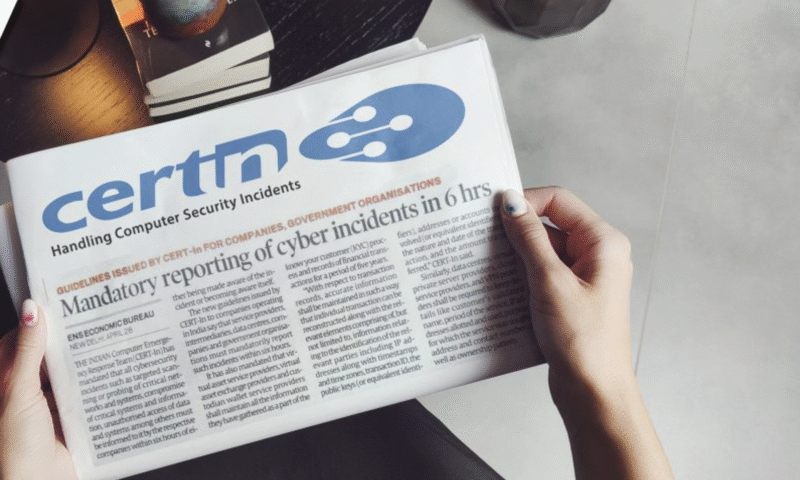
Broad Credential Exposure Involving Multiple Online Services
—–BEGIN PGP SIGNED MESSAGE—–
Hash: SHA256
Broad Credential Exposure Involving Multiple Online Services
Indian – Computer Emergency Response Team (https://www.cert-in.org.in)
Overview
Recently, several media reported a significant exposure of approximately 16 billion login credentials, including usernames, passwords, authentication tokens, and associated metadata from platforms such as Apple, Google, Facebook, Telegram, GitHub, and various virtual private network (VPN) services. Compiled from multiple unsecured datasets and infostealer malware campaigns, this leak presents a severe risk of unauthorized account access, identity theft, phishing, and a range of other cyberattacks.
Impact
This credential leak may enable adversaries/threat actors to conduct:
Credential Stuffing: Attempting stolen credentials across multiple services to gain unauthorized access.
Phishing and Social Engineering: Leveraging metadata for targeted phishing campaigns.
Account Takeovers: Unauthorized access to personal, financial, or organizational accounts.
Ransomware and Business Email Compromise: Exploiting compromised credentials for financial gain or data theft.
Description
The dataset aggregates credentials from 30 separate sources, primarily obtained through infostealer malware and exposed through misconfigured, publicly accessible databases-such as unsecured Elasticsearch instances.
The exposed dataset comprises:
Username and password pairs for services including Apple, Google, Facebook, Telegram, GitHub, and VPN services.
Authentication tokens and session cookies, enabling potential bypass of password-based authentication.
Metadata associating credentials with specific platforms or user profiles.
Primary data collection vectors include:
Infostealer Malware: Malware targeting browser-stored credentials, authentication tokens, and cookies.
Unsecured Databases: Misconfigured Elasticsearch instances and other publicly accessible databases exposing aggregated credential sets.
The availability of this data on the dark web increases the likelihood of exploitation by cybercriminals.
Recommendations to mitigate risks
It is recommended to take following actions to mitigate risks associated with this exposure.
For Individuals
Update Passwords Immediately:
Change passwords for all affected services, prioritizing email, banking, social media, and government portals. Create strong, unique passwords (minimum 12 characters, including letters, numbers, and symbols). Avoid reusing passwords across services to prevent credential stuffing attacks. Make it a habit to change your passwords regularly.
Enable Multi-Factor Authentication (MFA):
Activate MFA on all accounts that support it, using authenticator apps, hardware tokens, or SMS-based verification.
Transition to Passkeys:
Where supported (e.g., Apple, Google), enable passkeys for password-less, phishing-resistant authentication using biometrics or device PINs.
Protect Against Malware:
Run antivirus scans to detect and remove infostealer malware. Ensure operating systems, browsers, and applications are updated to address known vulnerabilities.
For Organizations and System Administrators
Implement Zero-Trust Security:
Enforce MFA and least-privilege access controls for all users and systems.
Monitor and Respond to Threats:
Deploy intrusion detection systems (IDS) and Security Information and Event Management (SIEM) tools to detect unauthorized access attempts. Monitor for suspicious account activity, such as unexpected logins or configuration changes.
Secure Data Storage:
Audit databases to ensure they are not publicly accessible. Implement encryption for stored credentials and sensitive data.
Employee Training:
Conduct cybersecurity awareness training focused on phishing prevention and secure password practices.
References
Cybernews
https://cybernews.com/security/billions-credentials-exposed-infostealers-data -leak/
Forbes
https://www.forbes.com/sites/daveywinder/2025/06/20/16-billion-apple-facebook-google-passwords-leaked—change-yours-now/
CERT-In
Securing social media accounts
https://www.cert-in.org.in/s2cMainServlet?pageid=PUBVLNOTES02&VLCODE=CIAD-2024-0006
Preventing Online scams
https://www.cert-in.org.in/s2cMainServlet?pageid=PUBVLNOTES02&VLCODE=CIAD-2024-0050
– – —
Thanks and Regards,
CERT-In
Incident Response Help Desk
e-mail: incident@cert-in.org.in
Phone: 1800-11-4949
FAX: 1800-11-6969
Web: http://www.cert-in.org.in
PGP Fingerprint: A768 083E 4475 5725 B81A A379 2156 C0C0 B620 D0B4
PGP Key information:
https://www.cert-in.org.in/s2cMainServlet?pageid=CONTACTUS
Postal address:
Indian Computer Emergency Response Team (CERT-In)
Ministry of Electronics and Information Technology
Government of India
Electronics Niketan
6, C.G.O. Complex
New Delhi-110 003
—–BEGIN PGP SIGNATURE—–
iQIzBAEBCAAdFiEE6r4Iam/Ey0c/KakL3jCgcSdcys8FAmhcDBEACgkQ3jCgcSdc
ys88hxAAqKajGiBE3q10iX/eu5PNTl2qjLiUpfoWUqfee3XWiljHGLOa/Ec5xF0W
xh5Vqq3eXf+3DDMnlGxxrjNK6fXh9kdOo0xz4ko043slkaehrwyD99gmez/OSgzy
gRbrPmVKp3e5DGoH0mEC0+dv5TILOSCb7lxNsPyiqdP936fGOzjQU6e7lRoaoo29
pGldatD3UycWBws66GS1LDLe5hFIqa4dwcg4RR+ZFGGGcrR88TcBlkYO1N9a707/
1p1emrysi69r/BRtMAusCgXcbFqB1VJ7ABSV9zZZnchpGXvm/2UoceQ8UDcqo43p
7Y5qLMexbIpXTIQBDgkB5aCBO+/knKvlefF8oWNwVpx0Z917KP01kO9c2zaO1Dv3
m06jaSO9Gbdb8OcsgFBvYZnh3Jf924P1NljL3W8kvdTdWSkTBJK8R/5lGsmqvOpL
rmatOcIg05kwEBst3gC7LuePTURmxlOA+GmtucYMsRaCAD6RI8SzErsubbUpTvUS
DAbMq9U3YTUC1w3l4rl8C4mhiBcohTrcaOpJOWxnA5ZOW5x6qs1YjT50nQGiJMA9
29XLLbzcdxdkc8s+iodM26x572GmMmQ1c54btLnNOU/YS1StXatw4/fF7QFHGNAl
Jb5tTp8YWu2ML/UiHQU05+0gwC8w9KBl2I6/lrxexZY0BnynAIU=
=U7TZ
—–END PGP SIGNATURE—–
Share this article
Related Posts
Follow us :
Categories
- All (1)
- Artifical Intelligence (23)
- Blog (23)
- Cert-In-Advisories (266)
- Cloud Security (20)
- Cloud Solution (6)
- Cyber Security News (2,893)
- Cybersecurity (255)
- Digital Networking (4)
- Endpoint Security (13)
- IT Management (1)
- IT Security (33)
- IT Services (17)
- IT-Solutions (17)
- Network Security (114)
- Networking (52)
- SaaS Security (8)
- Security (90)
- Tech Articles News (35)
- WiFi (19)
Archives
- January 2026 (54)
- December 2025 (517)
- November 2025 (517)
- October 2025 (592)
- September 2025 (447)
- August 2025 (665)
- July 2025 (472)
- June 2025 (33)
- May 2025 (18)
- April 2025 (14)
- March 2025 (20)
- February 2025 (10)
- January 2025 (19)
- December 2024 (15)
- November 2024 (14)
- October 2024 (21)
- September 2024 (28)
- August 2024 (21)
- July 2024 (10)
- June 2024 (7)
- May 2024 (6)
- April 2024 (16)
- March 2024 (14)
- February 2024 (12)
- January 2024 (24)
- December 2023 (16)
- November 2023 (59)
- October 2023 (23)
- September 2023 (20)
- August 2023 (41)
- July 2023 (31)
- June 2023 (25)
- May 2023 (7)

![[CIVN-2026-0001] Authentication Bypass Vulnerability in IBM API Connect](https://teamwin.in/wp-content/uploads/2025/06/certin-new-e1751351599950-500x383.png)

